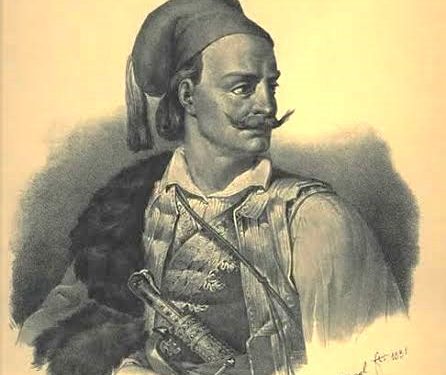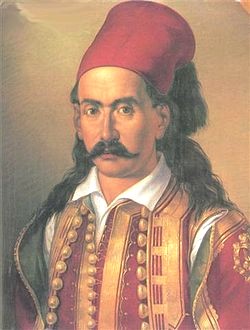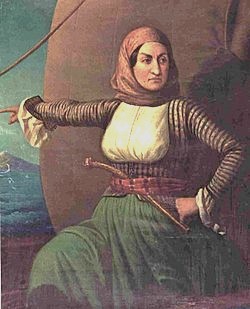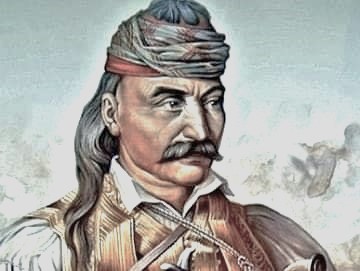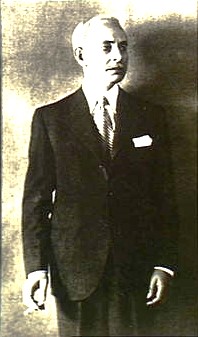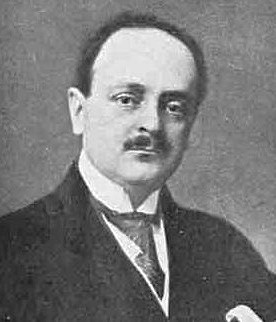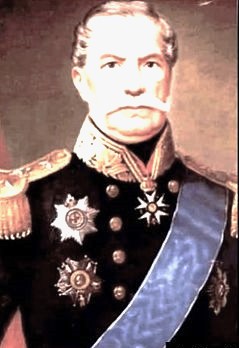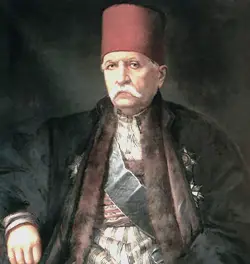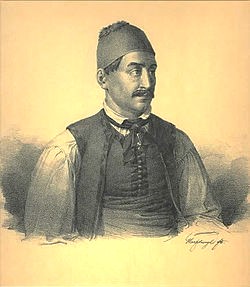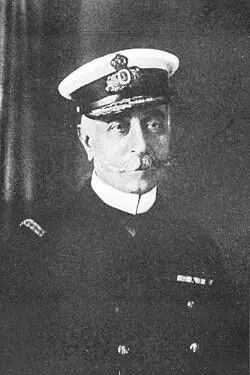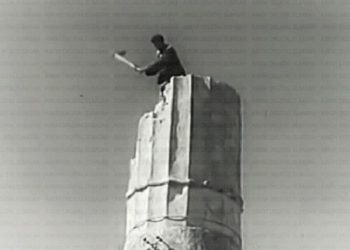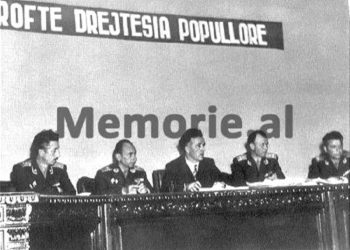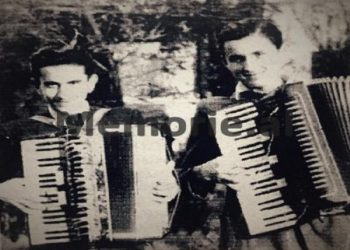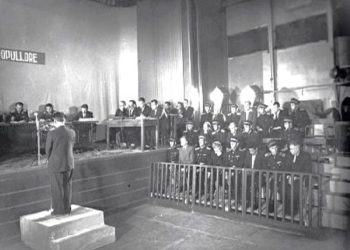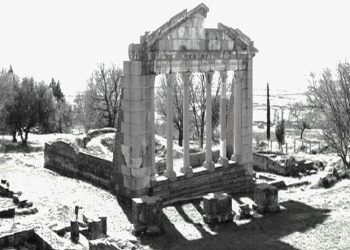By Arben Llalla
Memorie.al / The Albanian population, which has been living for years in the new Greek state, is divided into two groups, those called Arvanites, and those called Albanians, whom the Greeks call “alvani” and who came to Greece after the Ottoman-Turkish invasion. Few people know the true history of the Arvanites and the areas in Greece inhabited by populations who speak the Arbëro or Albanian language. In this study, we will mention some of the most prominent figures of the Greek revolution of 1821, who were Albanians, several prime ministers of Greece, who had Albanian blood, and many well-known figures of Greek culture who were Arvanites. It has been discovered that in Greece there are over 600 villages that speak the Albanian or Arvanitika language at home, where they are divided into two groups.
Those who are called Arvanites and are locals, who have been known since ancient times and there are about 450 villages, and Albanians, whom the Greeks call “alvani”, who came to Greece after the Ottoman-Turkish invasion, and there are over 150 villages. Mainly the villages that were inhabited and are inhabited by the element that speaks the Albanian language in the hearth are located in the area of Epirus, in Thrace, on the islands of Corfu, Speca, Hydra, Psaron, Andron, Poleponezi (Morea) etc. Researchers who are engaged in the discovery of villages where the Albanian language is spoken are Arvanites.
Foreign researchers about the Arvanites
The Arvanites of Greece, according to some foreign and Albanian studies, have been known in Greece around the 4th-7th centuries. But there are not many historians or different researchers of this opinion. Who think that the Albanian roots in Greece are earlier, since ancient times? For this confirmation there are many historical documents, songs, names of the gods of Olympus, names of ancient cities of Greece, which are explained only in Albanian or Arvanite language.
The name Arvanites derives from the word “Arbana”, and the word “Arbana” derives from the word “ar+ban” = “arbërës”, a person who works the land. Prehistoric Albanians were called by people of literature and knowledge “Illyrians” and later “Alban”. While these “Illyrians”, and “Albanians”, call themselves: Pelasgians, Arvanites, and Albanians and, their homeland “Pelaszgia”, “Arbana”, “Albania”, and have never called their homeland “Illyrian” and “Albanian”. For the first time, the ancient geographer Claudius Ptolemy, 90-160 AD, called “Albanian” the territory between Durrës and Dibra, and this population was called “Albanian”.
The Western world continued to use the name “ALBANIA” during the 150-year period of the Crusades (1096-1208), where Durrës became the main port and the Via Egnatia became the main route through Central Albania, leading to Constantinople (Istanbul) and further to the East. At the beginning of the 12th century, the Normans, in the Song of Roland, in French, called the region from Durrës to Vlora “ALBANA”. But then why do the Arvanites not call themselves Albanians or Albans, but call themselves Arvanitas…!? The name Albanian is known around 1400 AD, and so the Arvanites of Greece, and Asia Minor, have always been called Arvanitas, and Arnaut.
And all those Arbëreshë, who left after the death of Skanderbeg, call them Albanians. Perhaps the name Arvanitas should be older than the name Illyrian, and it has been proven that it is older than the name Alban. Because if we look at the old Pelasgian cities, they were built near rivers, being close to fertile lands, i.e. Arbëre. All the cities of Albania, we notice that they are built near rivers.
In the Greek language, Arbanës are called Arvanitas, because the Greeks read the letter “B” as “V”, so a person of the homeland “Arbana”. The Turks, the Arvanites of Asia Minor, call them “Arnaut”, which derives from the word “Arnavut” and the word “Arnavut” derives from the word “Arvanit”. While the Orthodox Christian Arvanites of Istanbul (Constantinople) and Egypt, they call them “Romei” or “Greçi”. Despite the differences between the Arvanites of Greece, the Arbëresh of Italy, Zara, Ukraine, Corsica and the Arbëresh of Pristina, Tirana, Ulcinj, Tetovo, in the way of thinking, expressing and feeling, we are brothers of one blood, one language, of the present Albanian nation.
That we have kept alive after so many centuries of war and difficulties, our old Albanian traditions. By keeping alive the spiritual ties between each other and the Arbëri heart. Studies in the direction of the Arvanites of Greece are very few, except for a few serious researchers from Pristina and a few from Tirana, to say the least. Albanian academics have not dealt much with the Arvanites, so today we lack many materials of great historical value for the Albanian nation.
Archives and books by Greek authors about the Arvanites
The Arvanites are a reality in the New Greek state. They fought in the Revolution of 1821, together with the Greeks, against the Ottoman Turks, for the formation of the New Greek state; the Arvanites call themselves the masters of Greece. The drafters of the Greek society were three Albanians from the village of Arvanitohori, – Pano Joani, Nikol Kristianika, Janaq Adhami. Decades ago, the prevailing view was that; the Arvanites in Greece are a low race. The Arvanites themselves believed this, as they did not know the history of their ancestors, who contributed to the creation of the New Greek state.
In order to deny the Arvanite contribution to the creation of the new Greek state, initially the race, the Albanian language were denied and mud was thrown at some prominent heroic figures of the Greek Revolution of 1821, who were Arvanites, that is, Albanians, calling them traitors, prisoners and many of them were killed in disloyalty. Thus, those Greek politicians and historians, who cast aspersions on some prominent Arvanite figures of 1821, sought to cut off the Arvanite roots of existence in Greece. But they did not achieve this malicious goal, because the historical, political and cultural life of Greece has no meaning without the existence of the Arvanite race in Greece.
Arvanites heroes and prime ministers of New Greece
It is a fact that can no longer be discussed, although until now it was partially hidden, that; 90 out of 100 heroes of the Revolution of 1821 were Arvanites or Albanians. That the Arvanites bore the brunt of the National Liberation War of 1821, in addition to being the overwhelming majority of the Greek people during the periods of the uprising, can also be explained by the fact that the Arvanites were a warlike people, whose pride could not tolerate the humiliations of slavery. The revolution of 1821 was mainly the work of the Arvanites of Epirus, Rumelia, Morea, and the Arvanites of the islands of Hydra, Speca and Psaron.
The Arban or Albanian people, in every Balkan country they happened to be in, always fought to expel every invader and desecrator of their sacred land. The Arban are the creators of the komitas groups under the Turkish occupation, who also preserved their ancient traditions and concepts, music, dances and folk songs. In 1647, the French consul in Athens, Jean Kird, confirmed that; “The komitas of the outskirts of Athens, Attica as well as in the Morea, are all Arbanites”. The Arban or Albanian, wherever he fought in the Balkans, was honored for his heroism in the Revolution of Alexander Ypsilantis, in Moldavia-Wallachia.
The Arban fought three centuries ago for the freedom of Cyprus, led by the Arbanite poet, Manolis Blesi, who this poet mentions in his poems, all the other Arbanites who fought in the siege of Lefkosia. The Arbanians wherever they were, far from the heart of their motherland Albania, did not forget it. In 1854, Teodor Griva with a large Arbanian union and his son Dimitri marched towards the liberation of Albania, but this march failed due to the malicious intervention of the Western powers and in particular France. In 1901-1907, General Riccioti Garibaldi, son of the national hero of Italy, Giuseppe Garibaldi, with about 1000 Arbanians, wanted to land on the shores of Albania, to liberate it from the Turkish invaders, but these attempts failed as a result of the intervention of the Western states.
Some of the Albanians or Arvanites, heroes of the Revolution of 1821 were, Gheorghe Kundurioti, Kiço Xhavella, Andoni Kryezi, Teodor (Bythgura) Kollokotroni, Marko Boçari, Noti Boçari, Kiço Boçari, Laskarina Bubulina, Anastas Gjirokastriti, Dhimitër Vulgari, Kostandin Kanari, Gheorghe (Llalla) Karaiskaqi, Odise Andruço, Andrea Miauli, Teodor Griva, Dhimitër Plaputa, Nikolao Kryezoti, Athanasio Shkurtanioti, Hasan Bellushi, Tahir Abazi, Ago Myhyrdani, Sulejman Meto, Gjeko Bei, Myrto Çali, Ago Vasiari, many, many other Albanians. Rightly, our national poet Naim Frashëri would sing to the Albanians the heroes of the Greek Revolution of 1821.
They crowned the King of Greece, Otho
The Albanians had the highest honor of bringing the crown of Greece to its King, Otho, because the three members of the commission that were sent were Albanians, Andrea Miauli, Marko Boçari and Dhimitër Plaputa. The Greek Revolution of 1821 is actually the work of the Arvanites. Even in the state that was created after 1821, almost the majority of the inhabitants spoke Albanian in Greece. It was the Albanian fame that forced today’s Greeks to accept the Albanian dress as their national costume. In honor of the bravery of the Albanian heroes, the Greeks took the Albanian national costume, which was worn from Kosovo to the Peloponnese, and made it their own.
However, the Greeks deformed this beautiful garment, worn by the Arbër nation, by increasing the number of layers of the dress from 60 to 200. In the jacket, in the loose sleeves, the Albanians do not tuck their arms, while the Greeks tuck them in. The Albanian dress is up to 10 cm long below the knee, while the Greeks shorten it as much as possible, covering only the buttocks. The Arvanites, these brave warriors, heroes of the Revolution of 1821, not only fought with their weapons for the independence of Greece, but were the first heads of the new Greek state, who led Greece towards the construction of European life.
Prime Ministers and Important Ministers
In 1850, the Arvanite Andoni Kryeziu, when he was Prime Minister, proclaimed the Greek Autocephalous Church, permanently separating it from the subordination of the Istanbul Phanar. When the Arvanite Dimitar Vulgari was Prime Minister of Greece, the unification of the seven islands with Greece became possible. Prime Minister Dimitar Vulgari strongly supported the uprising of the island of Crete, to unite with Greece. When General Theodor Pangallo was President of Greece (1925-1926), many important agreements were reached in the field of politics and culture with Albania. In 1926, the Arvanite Theodor Pangallo, grandfather of the former Greek Minister of Foreign Affairs and Culture in 1997-2000, with the same name Theodor Pangallos.
When he was president of Greece in 1925-1926, he made an official statement before the League of Nations in Geneva: “The Hellenic Republic recognized the Albanian minority living in Greece, and no longer considered the Mohammedan Albanians, a Turkish population. And that the thesis that the Albanian Orthodox are Greeks, which has been supported by us until now, is wrong and has been rejected by all of us. After it took a downward turn and reached the point where it could no longer hold, I took the appropriate measures and dissolved all the ‘vorioepirot’ societies, which indulged in the most extreme ends of this sick mentality.”
This part of the statement of the former Greek president with Albanian blood (1925-1926), Theodor Pangallo, to the League of Nations, was published during the August 1949 Provocations, in the newspaper “Acropolis” and was reprinted in 1974, in the book “Summary of Theodor Pangallo”, volume two, 1925-1952, pages 111-115.
When Theodor Pangallo was president, relations between the two states from 1925-1926 were the best they had ever been. The border between the two neighbors was removed, many Albanian boys studied for free in the schools of Athens, trade cooperation was successful, etc. Other Arvanites who became prime ministers of Greece include; Georgios Koundurioti, Andonis Kryeziu, Athanasios Miaulis, Dhimitės Kyriakos, Emanuil Repili, Pavlo Koundurioti, Aleksandės Koriziu, Petros Voulgari, Aleksandės Diomidi, Kičo Xhavella, etc.
The builders and founders of the Academy of Sciences of Athens
In the creation of the New Greek state, Albanians or Arvanites have contributed in all directions to the progress of Greece. The Arvanites were the first professors who founded the Academy of Athens. And the investor of the building of the Academy of Athens was Albanian. Since the first years of the Revolution of 1821, the freedom fighters had a desire to establish the Academy, because they believed that the most powerful weapon of all was the enlightenment of the brain, that is, the University, the Academy, in short, education. Many attempts were made to open the Academy, but they failed.
Only in 1926, the then Minister of Education, Dhimitër Egjiniti, an Arvanite from Egjina, reported and published the “Main Orders” on March 18, 1925, and the Academy of Athens with its current interior and mission became a reality. The building, which houses the Academy, has an interesting history, because the building was financed by an Albanian from Voskopoja. In 1856, the very wealthy merchant from Voskopoja of Korça, in Vienna, Austria, Simon Sina, wanted to make a great gift to Greece, inside Athens. Simon Sina was the son of Gjergj Sina, former Consul General in 1834, of the Greek government in Austria. The Sina family was originally from Bithkuqi (today Vithkuq) of Korça, but from there they settled in Voskopoja and later settled in Vienna.
The Sina family was initially involved in the development of trade between Austria and the Ottoman Empire. Later, they founded factories for cotton and linen. They founded the Austrian National Bank. The Sina family made many charitable donations, including the Budapest Suspension Bridge, which cost 500,000 British pounds at the time. George Sina was vice president of the Austrian Bank, president of the Austrian Railways, and a landowner in Austria, Bohemia, Moldavia, Romania, Serbia, etc. The Sina family was decorated by the Russian, Turkish, and Greek governments for their charitable work in these countries. George Sina died on May 18, 1856. Thus, his son, Simon Sina, followed in his father’s footsteps, also making large charitable donations.
The Sina family never forgot their homeland, Albania. They sent many Albanian sons on scholarships to European universities. In 1859, the first works began, on April 15, 1876, Simon Sina died leaving only two daughters as heirs and, based on his will, his wife, Ifigjenia Sina, continued and completed the work in 1885. Thus, the opening of the Academy of Athens is dedicated to two true Arvanites, Teodor Pangallo, who was then inside the works, and another Arvanite, Dhimitri Egjiniti, who was then Minister of Education. Some of the academicians who were Arvanites are; Dhimitër Egjiniti, Angjelo Gjini, Sotiri Shqipi, Spiridon Doda, Vasil Egjiniti, Gjergj Sotiriu, Kostandin Horemi, Aleksandër Diomidhi, Maksim Miçopoulos, Vasil Malamo, Dhimitri Kaburoglu, Teofil Vorea…!
Prominent Arvanites in Greece, leaders of the 1921 Revolution
Kiço Xhavella
Theodor Kollokotroni
Marko Boçari
Laskarina Bouboulina
Prime Ministers
Andoni Kryeziu
Dhimitër Voulgari
Ggeorgio Koundurioti
Athanasio Miauli
Dhimitër Kyriako
Emanuil Repili
Pavlo Koundurioti
Alexander Koriziu
Petro Koulgari
Alexander Diomidi
Kiço Xhavella
Theodor Pangalos, president 1925-1926
Theodor Pangalos, foreign minister 1997-2000/ Memorie.al




